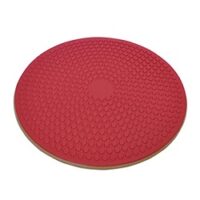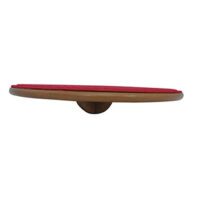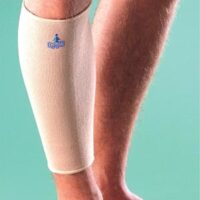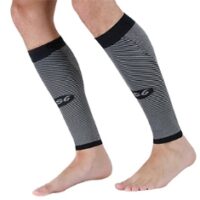Shin Pain
Article by John Miller

Managing Shin Pain: A Physiotherapist’s Perspective
Introduction to Shin Pain Management
Shin pain, a common issue among athletes and active individuals, can arise from various causes ranging from overuse injuries like shin splints to more serious conditions such as stress fractures and compartment syndrome. Understanding the nature, causes, and effective treatment strategies for shin pain is crucial for anyone engaged in physical activities. This article, crafted with the expertise of physiotherapists, offers a deep dive into the world of shin pain, providing insights into its diagnosis, management, and the pivotal role of physiotherapy in treatment and prevention.
The Importance of Accurate Diagnosis in Shin Pain Treatment
Accurate diagnosis is the cornerstone of effective shin pain treatment. Misdiagnosis can lead to ineffective therapies and prolonged discomfort. A physiotherapist conducts a comprehensive assessment, considering factors like pain location, intensity, and activities that aggravate or alleviate the pain. This detailed evaluation ensures that the treatment plan is tailored to the specific cause, whether it’s shin splints, a stress fracture, or another condition. An accurate diagnosis paves the way for targeted treatment, ensuring faster recovery and preventing future occurrences of shin pain.
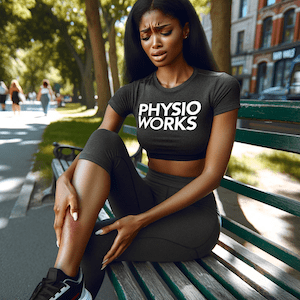
Shin Splints: The Common Culprit
Shin splints, prevalent in runners and athletes, emerge as small tears in the leg muscles near the shin bone. Symptoms include pain and tenderness along the shin, especially during and after activity.
Related article: Shin Splints
Stress Fractures: A Step Further
Untreated shin splints can progress to stress fractures. Distinguishing between these injuries is essential for effective treatment and avoiding prolonged rest periods.
Related article: Stress Fractures
Compartment Syndrome: Recognising the Signs
Compartment syndrome, a condition marked by increased pressure within a muscle compartment, can be a serious concern, requiring immediate medical attention in its acute form.
Related article: Compartment Syndrome
Delayed Onset Muscle Soreness (DOMS)
DOMS affects muscles around the shin, often due to overuse, characterised by muscle pain and stiffness.
Related article: DOMS
Shin Pain in Runners
Shin pain in runners is often caused by sudden changes in training routines. However, it’s not exclusive to running; other high-impact sports can also lead to shin pain.
Related article: Running Injuries
Calf and Achilles: The Overlooked Factors
Sometimes, shin pain might be due to issues in the calf or Achilles tendon, such as strains or tendinopathies or biomechanical issues such as flat feet.
Related articles:
Referred Pain: A Wider View
Shin pain, pins and needles or numbness can also be referred from other areas like the lower back or due to conditions like sciatica.
Related article: Sciatica

The Role of Physiotherapy in Managing Shin Pain
Physiotherapy plays a crucial role in diagnosing and treating shin pain. Physiotherapists employ various techniques, including manual therapy, exercise prescription, and advice on activity modification, to address the root cause of shin pain. They can also provide guidance on proper footwear and training techniques to prevent recurrence.
Physiotherapy is beneficial in:
- Reducing pain and inflammation
- Improving muscle strength and flexibility
- Enhancing joint mobility
- Preventing future injuries
- Offering tailored rehabilitation programs
What To Do?
Consulting a physiotherapist is key to an accurate diagnosis and effective treatment plan for shin pain.
Conclusion
Shin pain, while common among athletes, can be effectively managed and treated with the right approach. Understanding its causes, symptoms, and seeking professional advice early can lead to quicker recovery and prevent recurrence.
Related Articles
- Shin Splints – This article focuses on shin splints, a common cause of shin pain, offering guidelines for managing and recovering from this condition.
- Posterior Shin Splints – This piece discusses posterior shin splints, discussing their causes, symptoms, and strategies for effective management and recovery.
- Anterior Shin Splints – This post explains anterior shin splints and how it differs from posterior shin splints in causes and treatment.
- Stress Fracture Management And Prevention – Here, you’ll find valuable information on managing and preventing stress fractures, which are a serious progression of shin pain.
Shin Pain Causes
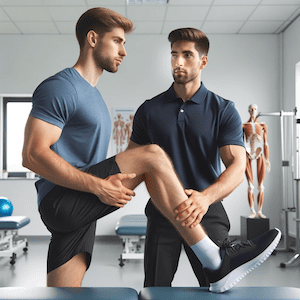

Shin Pain and Injury
Common Sources and Conditions
Understanding the common shin pain causes is crucial for effective management and prevention. This section discusses the various factors that contribute to shin pain.
General Overview of Shin Pain
Exploring the basics and general aspects of shin pain
Specific Conditions Related to Shin Pain
Shin Splints
Bone-Related Issues
Tendon and Muscle Problems
- Tibialis Posterior Tendinopathy
- Calf Muscle Tear
- Muscle Strain
- DOMS - Delayed Onset Muscle Soreness
- Cramps
Achilles Tendon Issues
Other Related Conditions
Shin Pain Due to Overuse and External Factors
Systemic and Neurological Conditions Leading to Shin Pain
Shin Pain Treatment
Effective treatment options vary depending on the cause of shin pain. This part provides guidance on treating different types of shin pain.
- Treating Shin Splints: Guidelines for managing and recovering from shin splints.
- Stress Fracture Care: Tips for healing and rehabilitation.
- Muscle Injury Treatment: Advice on treating strains and overuse injuries.
- Post-Fracture Rehabilitation: Strategies for dealing with shin pain following leg fractures.
Shin Pain FAQs
This section answers frequently asked questions about shin pain, providing valuable information for those experiencing or concerned about shin pain.
















